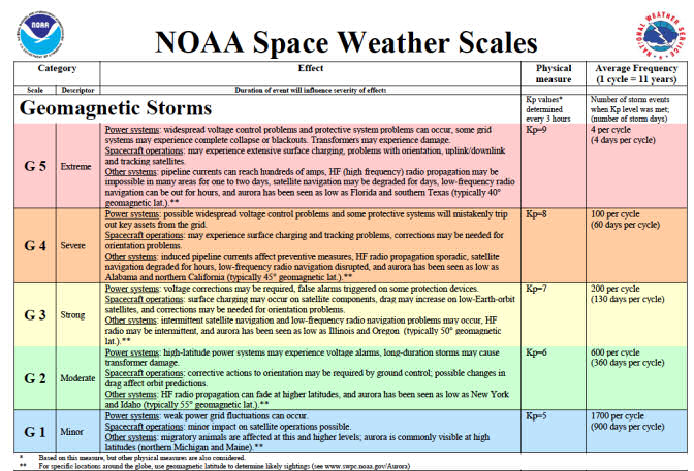Several meteorological components of NOAA were located in the World Weather Building, commonly known as the WWB, from 1974 through 2012. It was always referred to as the WWB despite the prominent "NOAA Science Center" logo on the front of the building. When I began my career at the WWB in NOAA with NESDIS (National Environmental Satellite Service, NESS back then) in May 1974, the main operational units of NESDIS and the National Meteorological Center (NMC, later NCEP) were in Federal Office Building 4 (FOB4) in Suitland, MD. Only a few units had relocated from FOB4 to the brand new and much nicer WWB. The Washington forecast office, called a Weather Service Forecast Office (WSFO) in those days, was on the third floor of the WWB. NESDIS had a few staff in the building on the sixth floor, where the computers to generate sectors from the new GOES satellites were installed. There was a shuttle bus that brought paper maps hourly to the WWB from NMC in FOB4 and shuttled people back and forth. NMC operations and most other units that became part of NCEP relocated to the WWB in 1975. At that time the building was not fully occupied by NOAA. The building owner occupied the 8th floor and Allstate Insurance (and possibly others) had offices on the first floor. There was no food service, although a few vending machines were added in the late 70s or early 80s.
For the first few years the building had no guards or security. The building was not locked at night. In those days before the internet, I would often come into the building nights or on days off to look at the map display that was always kept current in the fourth floor briefing room where map discussion was held. My memories of those map discussions are quite vivid, and were of a different type than now held at HPC. If the managers present could get the presenter flustered, they won. The managers won a lot.
The technology at the time included teletype and fax machines. Text products were typed on typewriters by forecasters and retyped on teletypes by meteorological technicians (met techs). Forecasters used grease pencils to draw their maps on acetates (they weren't yet "graphics") and met techs redrew them neatly onto paper preprinted with background maps to be scanned into fax circuits. Radar and satellite data were much more limited than today. In the 1980s the WSFO relied on a fax machine to show radar imagery from Patuxent River. The images were monochrome with three levels of gray updated every 10 or 15 minutes. Satellite imagery was available via fax (one picture every 30 minutes). But the occupants of the WWB were lucky! Four times a day the 5th floor NESDIS photo lab distributed a 16 mm movie loop. There was a small room off to the side of the WSFO with a 16 mm projector where the loops of satellite imagery could be projected and viewed. This was a luxury shared by few forecast offices.
Model data were much more limited compared to today. If I recall accurately, in the 70s we had two runs per day of the 6-layer PE global model. The LFM went out to 24 hours, then was extended to 36 hours and then 48 hours, and the barotropic model was still taken seriously. There were more people doing less work. For example, surface analysis was a branch with its own Branch Chief. Six or eight meteorologists (probably interns) manually plotted the observations on the paper charts, which had been cut into segments corresponding to the teletype circuits then taped together for analysis. Three meteorologists prepared the analysis. Today surface analysis at HPC is handled by one person per shift, and that person has additional duties at times.
The technology gradually changed as workstations replaced paper, and more model data became available, but the physical environment didn't change much. Gradually NOAA took over the commercial space and by the 1990s, occupied the entire building. But the most significant changes I saw during my more than three decades in the WWB were in the science used in the preparation of forecasts. In the 70s, forecasters were limited to paper output from the models with a very basic set of parameters. With the coming of workstations, forecasters were able to look at multilevel gridded output and the level of science soared.
I don't want to leave the impression that those were difficult times to be a forecaster. In many ways, forecasting was more fun back then when the tools were cruder and you relied more on your experience and aptitude and felt great when you made a good forecasts.
While I have many fond memories of the WWB, both the opportunities to work there and the people I've had the honor and pleasure of working with, I am enjoying the much-improved facilities here in the NCWCP. The new building lends itself to more efficient operations and is a welcome change for HPC forecasters. Because of this I am happy to move on and leave the WWB behind. It was a big part of my life, certainly, but a chapter that is closed now and can recede into happy memories for me to savor in those far distant times in the future when I grow old. The letters WWB will no longer be a part of my life, but only a memory.
Or so I thought. A few weeks after leaving the WWB I bought a new car and they were accompanied by new license plates. Totally by chance they begin with three letters. You guessed it: WWB.

Wallace Hogsett (HPC Science and Operations Officer) and Ed Danaher in front of the WWB representing two extremes. Wallace worked at the WWB for a few days, and Ed for a few decades.






 Click image to zoom
Click image to zoom





























